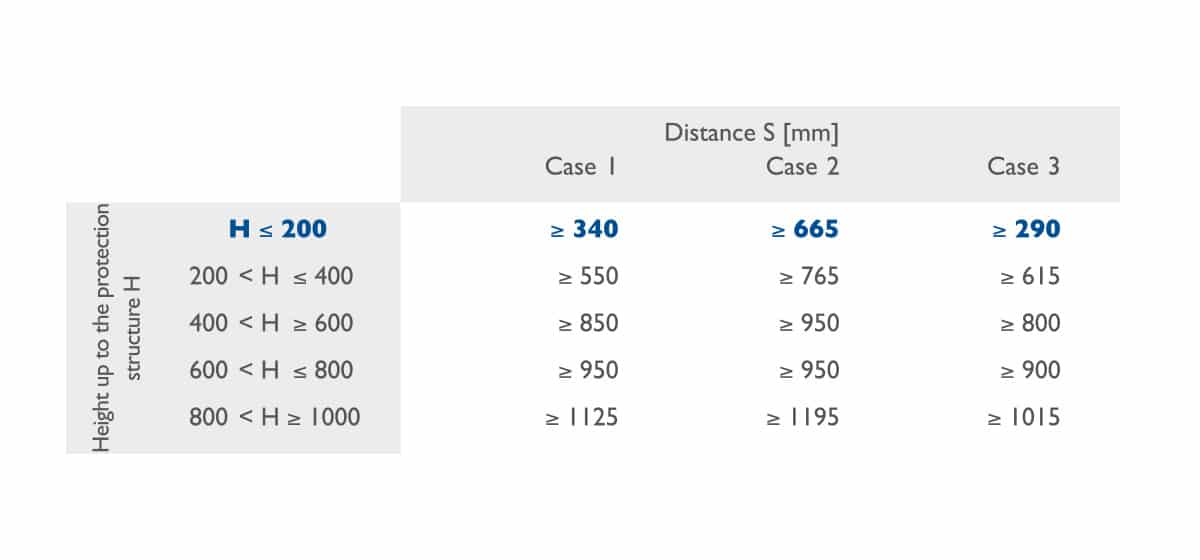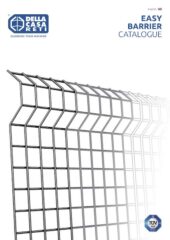Della Casa Reti designs and manufactures the EASY BARRIER system’s components in compliance with the criteria and technical requirements contained in the reference standards.
UNI EN-ISO 12100:
this standard has as its main object the safety of the machinery, general design principles, risk assessment and risk reduction.
UNI EN-ISO 13857:
standard concerning the safety of machinery and safety distances to prevent upper and lower limbs from reaching danger areas. It establishes values for these safety distances.
UNI EN-ISO 14120:
this standard specifies the general requirements for the design and construction of guards whose main objective is the protection of people from mechanical dangers.
UPPER EXTREMITIES TABLE
Reference table relating to safety distances to prevent reaching danger areas with the upper limbs in situations of high risk (extract from UNI EN-ISO 13857).
Upwards accessibility: if the danger area is at reduced risk, the height (H) of this area must be greater than or equal to 2500 mm; if the danger area is at high risk, the height (H) of the danger area must be greater than or equal to 2700 mm or other safety measures must be taken.

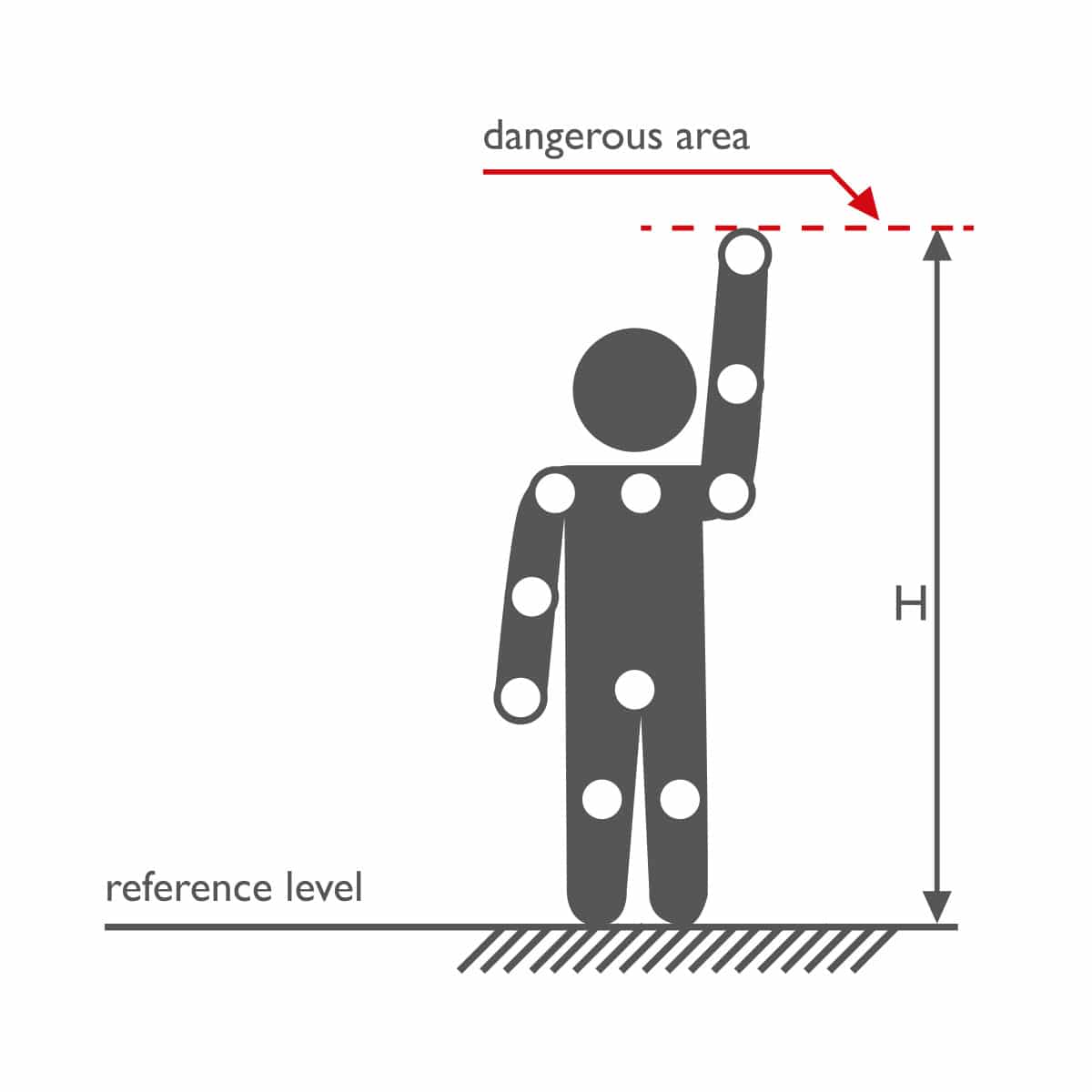

A) dangerous area
B) protection structure
C) horizontal distance
of the dangerous area
LOWER EXTREMITIES TABLE
Reference table relating to safety distances to prevent reaching danger areas with the lower limbs (extract from UNI EN-ISO 13857). Advises on the limitations of free movement under protective structures.
The figures shown outline particular access conditions of the lower limbs of a person in an upright position below a barrier; the table shows the minimum distance (S) from the danger area for each condition. The application of the table values may not be suitable, if there is any danger of slipping or incorrect use. It is incorrect to interpolate the table values. When the height (H) is included, from the ground to the protection structure, between the minimum and maximum values of one of the indicated fields, the distance (S) provided for the maximum value must still be used.
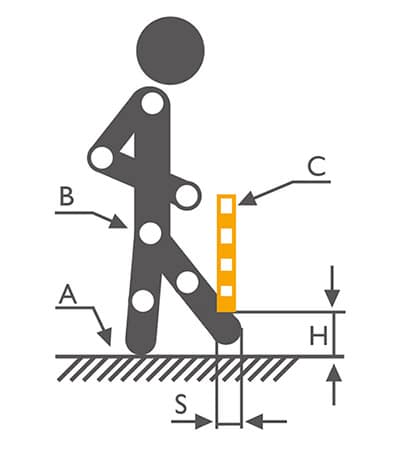
CASE 1
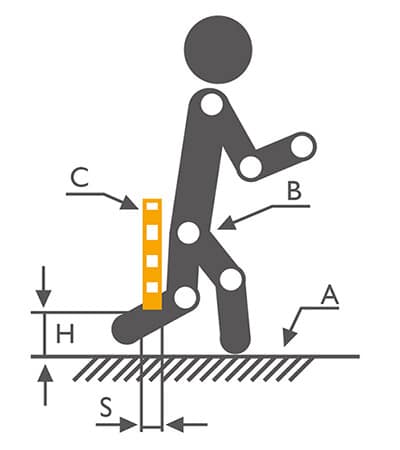
CASE 2
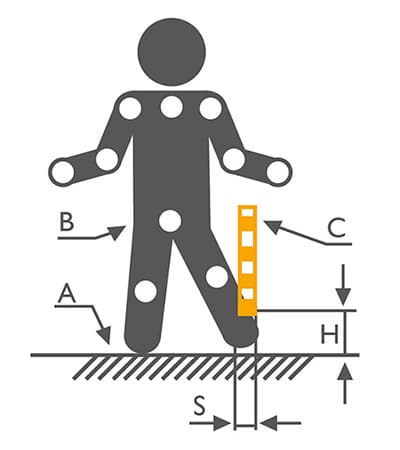
CASE 3
A) reference level
B) hip joint
C) protection structure
